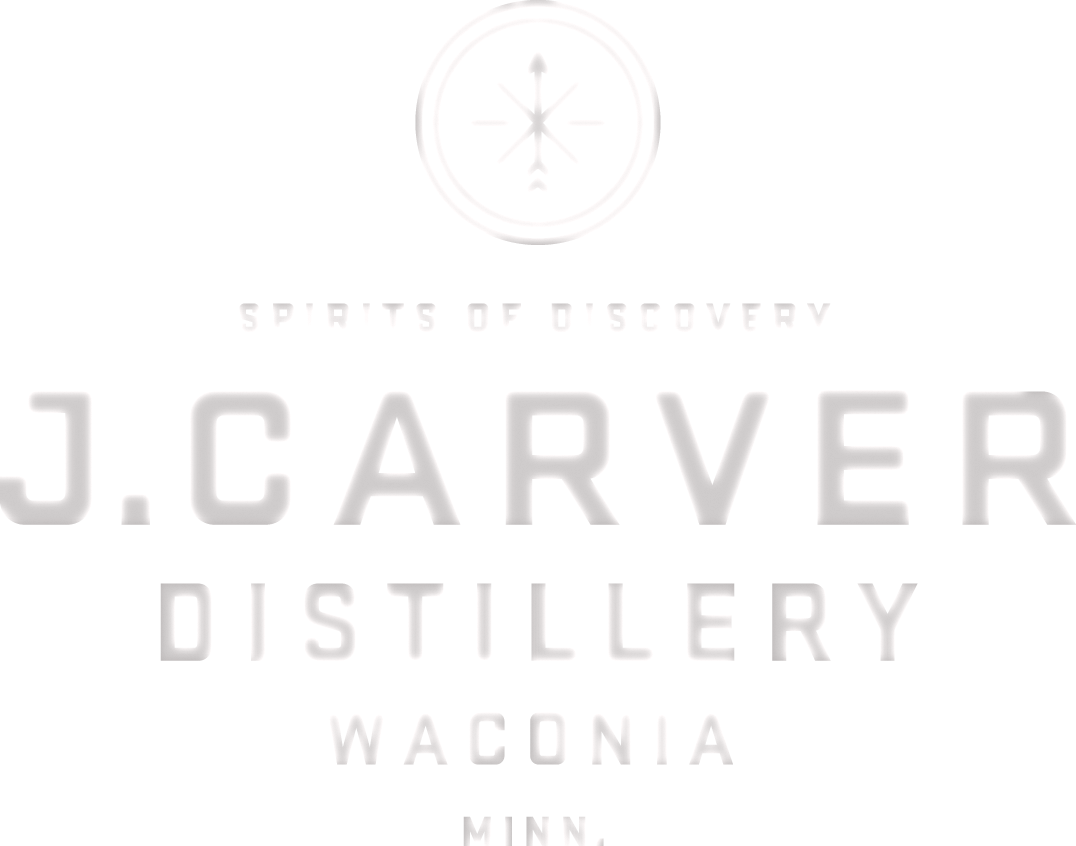Article by: Paige Latham, Heavy Table January 14, 2015
Photo by Isabel Subtil / Heavy Table
Waconia and its neighboring cities contain three wineries and two breweries. And last fall, a distillery was added to the tally. J. Carver Distillery erected its stills last August and sent its first bottles to market on October 23.
The distillery has about eight products in the works, and there is more seasoned experience to this operation than the shiny new exterior of the repurposed car dealership would suggest. Founders Bill and Matt Miller have years of experience in distilling, and Matt (above) joins this project after opening and running the Catskill Distilling Company in Bethel, N.Y. Add International Sommelier Guild instructor Gina Holman to the mix as operations director, and the various backgrounds offer a strong platform from which to develop their products.
Upon entering the facility, visitors are greeted by the strong smell of grain and an apple-like tartness. Multiple German-made copper stills and stainless fermentation tanks flank what used to be the car showroom. Today the 2000-liter whiskey still is active; Matt is perfecting his rye recipe.
Photos by: Isabel Subtil / Heavy Table
Currently, there are two J. Carver products available in liquor stores and restaurants: vodka and gin. A few staff member suggested that because of its mildness, the gin is perfect “for those who do not like gin.” Holman wants to present a spirit with the quality and botanicals to be as “beautiful on its own” as it is mixed into a classic cocktail.
In fact, the gin contains very balanced and delicate botanicals rather than strong juniper or pine notes. Those hoping for a London style may be disappointed, while others will likely be invited into the gin-loving fold via cardamom and other aromatics. Whether or not the beverage is mild to a fault depends on the expectations of the drinker, but one thing is for sure — the lack of burn and variety of spices used make for interesting choices both straight-up and mixed.
The vodka, too, is by no means by-the-books — and in a decidedly good way. After a philosophical discussion about what flavorless and odorless means, we were pleasantly surprised to taste a vodka with discernible character but no overwhelming flavors, indicative of distilling expertise and continuous distillation to 96 percent purity. We detected pepper and vanilla notes.
Photo by: Isabel Subtil / Heavy Table
Very precise rectification, or “cutting” — meaning sorting of the good and bad alcohols as they leave the still — is required for vodka with no burn. The first and last alcohols to condense out of the steam are undesirable because they render significant off-flavors. Removing these components requires good timing, which is both an art and science.
At this point in the Minnesota game, vodka makes or breaks the craft distiller. While whiskeys and bourbons age and flagship spirits are in development, those who entered the game within the last year or two are putting all or most of their chips on vodka. Aside from a gin here or there, Millers and Saints, Wander North, Norseman, and Du Nord have all sent a vodka to market as their cash cow while more time-intensive spirits incubate.
J. Carver vodka stands out among its peers. It steers clear of the yellow-cake nature of Wander North Outpost Vodka and causes less of a burn than that of Millers and Saints. It is made using 100 percent winter wheat (planted in the fall and harvested after dormancy) from Glencoe, Minn.
Photo by: Isabel Subtil / Heavy Table
Experimentation is more than welcome at J. Carver, whose tagline is “spirits of discovery.” To that end, several staff members are taking new ideas and running with them. Bill Miller shared with us his passion for grappa, a strong Italian after-dinner sipper, in which he utilizes winemaking leftovers from nearby Parley Lake and Sovereign wineries. We spied a case of mason jars full of grappa, each made with different grape varieties, including Merlot and Marquette.
Holman fills the role of gin queen, wrangling different types of barrels and botanicals and creating seldom-seen barrel gins. The one we sampled leaves the Minnesota-made barrel with a dilute amber color and fascinating depth of flavor in a league of its own. Although not in the barrel long enough to be considered “aged,” the gin’s contact with the wood allows tannins a chance to interact with the botanicals and reveal a new array of previously concealed notes. Bottles of barrel gin will go to market in February.
The winter wheat, grape leftovers, and barrels are indications of how locally-minded J. Carver is. Holman and the Millers envision a network of businesses in the Waconia area that seek to define “craft” within the industry by working with local farmers and brewers. The 11th distillery in the state conceptualizes a “grain-to-glass” emphasis in which visitors can experience more than just another tour. Holman, an educator by trade, wants to bring guests closer to what is in their glass.
What this means will become more clear later this year when the cocktail room opens to the public. A handful of products will debut at that time in addition to the gins and vodka. Potential choices include apple and grape brandy, which are currently in barrels.
Photo by: Isabel Subtil / Heavy Table






